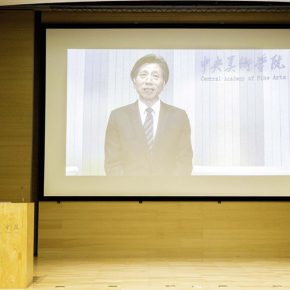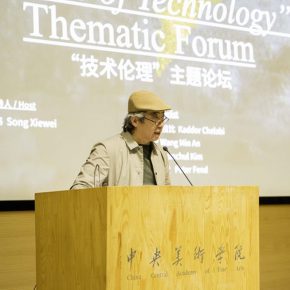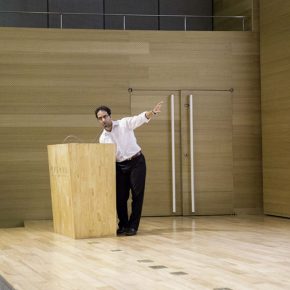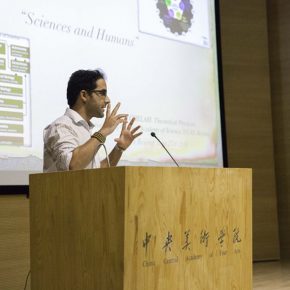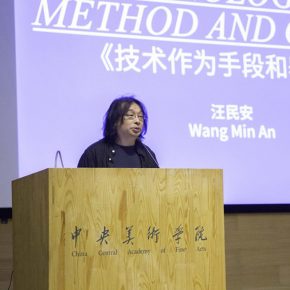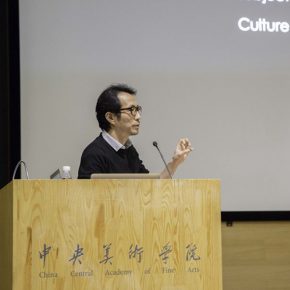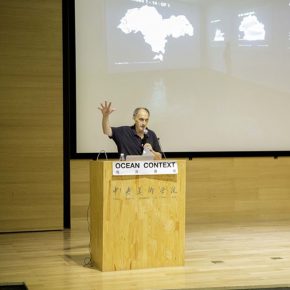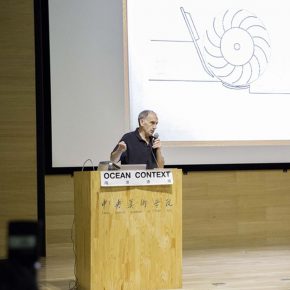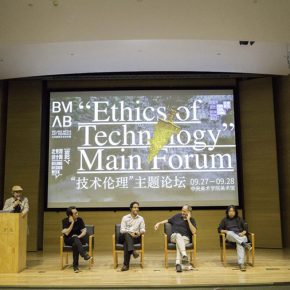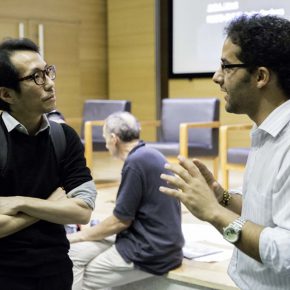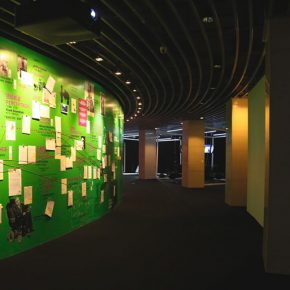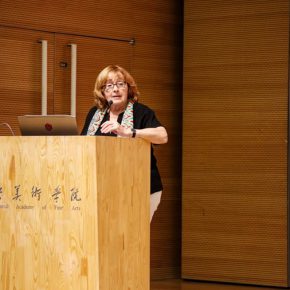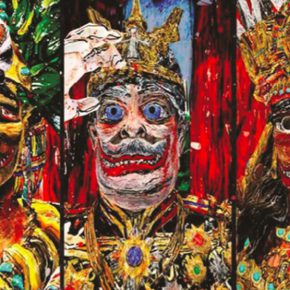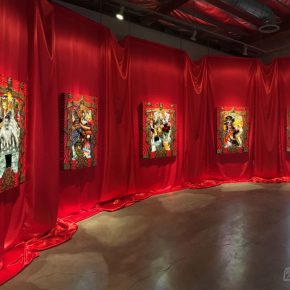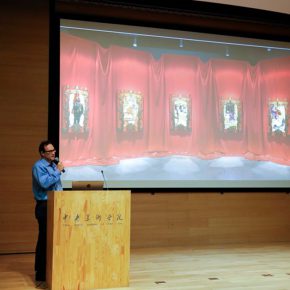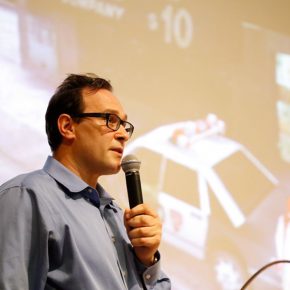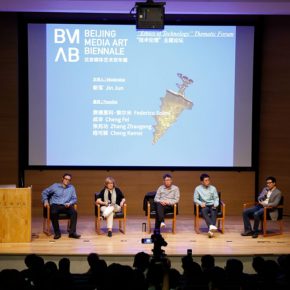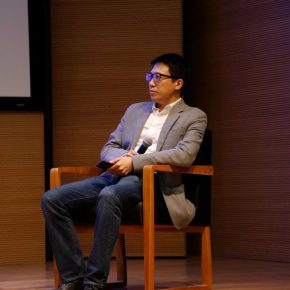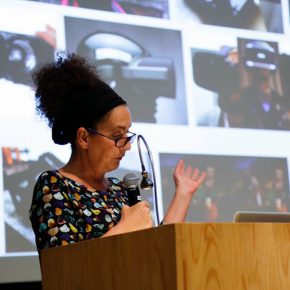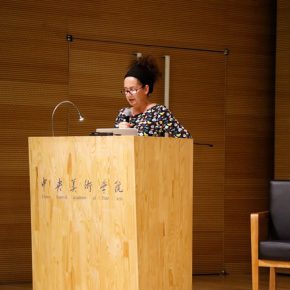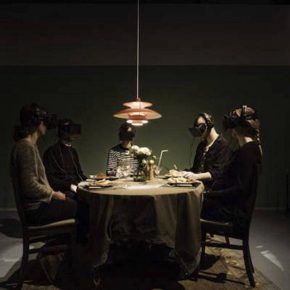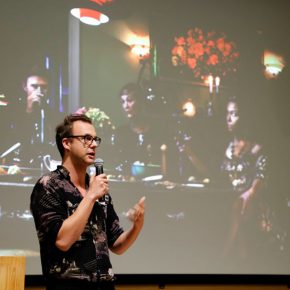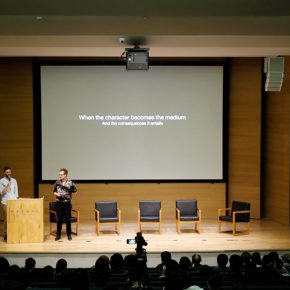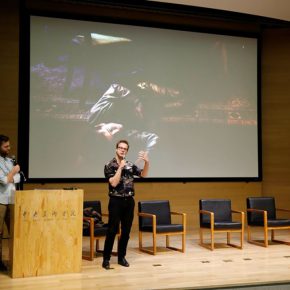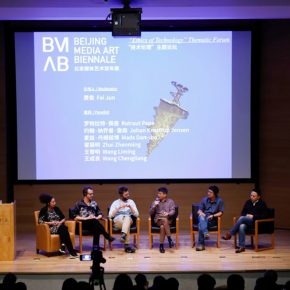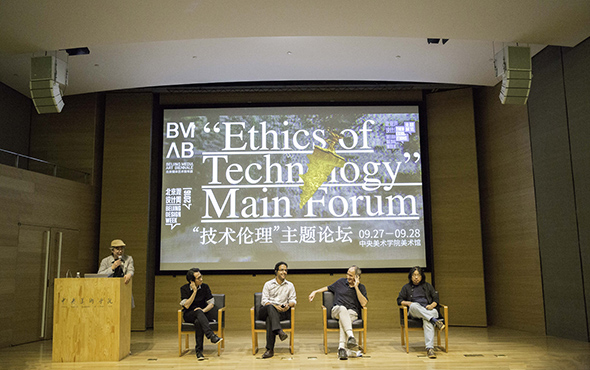
In 2016, the first Beijing Media Art Biennial was simultaneously unfolded on 25 September in two venues?–?“Experimental Space” Special Exhibition at CAFA Art Museum and “Ethics of Technology” Thematic Exhibition at the Beijing World Art Museum. On September 27, “Ethics of Technology” thematic forum was concurrently held at the Auditorium of CAFA Art Museum. The forums lasted for two days, and the organizers invited well-known artists and scholars from around the world for discussions on the topic of “Ethics of Technology”, starting from the perspective of science, big data, mixed reality, artificial intelligence and biological genes, they then questioned the “Ethics of Technology”. ??
The First Session of “Ethics of Technology” Thematic Forum:?Stagnation of Science, What is Technology?The first session of the thematic forum was hosted by Song Xiewei, Dean of the School of Design at CAFA, he said that the thematic forum did not only unfold around art issues, but also focused on current technological hotspots and ethical dilemmas. “We do not only discuss art issues, we also discuss the ethical issues caused by the influence of technological development. President of CAFA Fan Di’an was not able to be present at the forum, so a video presentation of his speech was played, “The Media Art Biennial is held in China, mainly in Beijing, which offers us a platform to jointly discuss the possibility of the development of media art together with peers from the international art community, the experts in science and technology.”
Kaddor Chelabi: Stagnation of Science
Kaddor Chelabi, a foreign expert from the Chinese Academy of Social Sciences who majored in physics put forwards that, it was necessary for people to return to real science. He believes that people must return to the knowledge of nature, return to the basic fields and then re-clean science, making it return to the innocence of nature, rather than simply focusing on changes of language.
Wang Min'an: Technology as Method and an Organ???
What is “technology”? Prof. Wang Min’an from Capital Normal University said that technology was a method used by people to transform nature, technology was a tool for people, and the medium of people to come in contact with? nature. It was the development of technology that led to the development of modern society. However, the development of technology was precisely a dangerous situation for people. After the end of the 20th century, a new technology emerged which was for the people. Prof. Wang divided it into three types: artificial intelligence, genetic technology and a combination of organic and inorganic materials – Cyborg. “The core things of these three living things or the three technologies which re-invent our concept of human.” At the same time, it is a paradox that technology is applied in the manufacturing of medicine while it is also used in the manufacturing of weapons –consequently between? life-saving and homicide.
Yunchul Kim: Material Reality??
Yunchul Kim is one of the artists participating in the Beijing Media Art Biennale, “As an artist and a musician, I use materials daily to create in the studio”, Kim started from his own experiences to talk about the “ethics of technology” from his understanding.
Peter?Fend: Exploration on the Art Production Plays a Role in the Co-Evolution and Change towards Multi-Species?
American artist Peter?Fend is also one of the artists participating in the Beijing Media Art Biennale, and at the beginning of his speech, he presented some images of animals to the audience and raised an ethical question: “How do humans survive in symbiosis with animals? And then he questioned, what should we do about the global warming? Was it possible to use new technology to capture energy from the environment which would not cause global warming? And he answered the questions.
The Second Session of “Ethics of Technology” Thematic Forum: When Game Enters Art, Where is the Boundary between the Virtual and?Reality?On the afternoon of September 27, the second session of the “Ethics of Technology” forum was hosted by Anita Beckers, the chief curator of the B3 Biennial of the Moving Image in Germany and it was themed “Desire Appeal”, which is also the theme of the B3 Biennial of the Moving Image to be held in Frankfurt next year. The forum is divided into two sessions including keynote speeches and panel discussions.
Federico?Solmi: When Game Encounters Art and the Movie
Federico?Solmi’s new work “The?Ballroom” is on display at the CAFA Art Museum. The work is a combination of hand drawings and electric screens, Solmi said that, “In animation, I use a lot of technology and simulate the rendering of each character’s three-dimensional model, and the animations on the video are all hand-drawn.”
Panel Discussion I
Honored guests: Federico?Solmi, Cheng Fei, Zhang Zhaogong, Anita Beckers
The panel discussion was hosted by Prof. Jin Jun. First of all, Prof. Cheng Fei questioned Federico?Solmi on his speech: how did you treat the creative problems between games and art? Solmi replied that: the game industry was undergoing an aesthetic revolution, how to become part of this revolution? Howto join this experiment? “I am doing very pioneering work, not only in painting, technology is the most important thing for me.”
Rotraut Pape: Reflection on the Immersive History
Prof. Rotraut?Pape from the Academy of Art and Design (HfG) Offenbach has been teaching virtual reality and related projects for many years. She started with a book entitled “On the Lost Media”, she listed all kinds of “new technology” that have appeared in history, such as the diorama, old cameras, television sets, cinemas, and so on. She compared virtual reality with dioramas appearing in the 18th and 19th centuries, she said that, “It is another kind of diorama, a new kind of spectacle of virtual reality which is regarded as a bridge connecting television with virtual reality.
Johan Knattrup Jensen & Mads Damsbo: Doghouse
The performers, producers and artists from Denmark, Johan Knattrup Jensenand Mads Damsbo are students of the Academy of Film, and they have been working together with creations since then. Their film work “Doghouse” is on show at the Media Art Biennale of the year. John said that, “In the process of making the work ‘Doghouse’, virtual reality showcased many advantages but also some side effects because virtual reality is a very powerful medium that has the power to move you from one reality to another completely different reality which is created and controlled by us; at the same time, it allows you to forget yourself in this virtual reality.”
Panel Discussion II
Host: Fei Jun
Honor Guests: Rotraut?Pape, Johan?Knattrup?Jensen, Mads?Damsbo, Zhai Zhenming, Wang Liming, Wang Chengliang
At the beginning, the host Prof. Fei Jun from CAFA put forward a question: In the VR era, how do we look at the boundaries between reality and the virtual? John believed that the more we use art and story to explore and understand reality and connect with the virtual reality, it is better to have a relationship with the true reality; teachers Wang Liming, Wang Chengliang from the School of Design, CAFA also participated in the discussion. Wang Liming said that the boundaries between the virtual and reality entirely depended on the extent of scientific and technological development, while Wang Chengliang compared VR to a “correction”. Prof. Zhai Zhenming from the Philosophy Department at Sun Yat-sen University has proposed a new concept: Extended Reality (ER), namely a product blending the internet virtual reality and products from the internet, a self-sufficient virtual world.
What does the immersive experience produced by VR bring to art? Mads believed that VR was a skill, rather than a trick, it was able to allow us to cross obstacles to some extent. Wang Liming believed that “The academy can use VR Panoramic Creations to create a new art language, which is a subject that is worthy of researching under the new conditions of VR.
Media art has particular development, many students who are in touch with the field of media art always have the same temptation: Focusing on technology in the past they then missed the art, or the creation that lacked technology was unable to support the concept of art ... so if this is the case, how to deal with the relationship between art and technology? In response to this question, Prof. Rotraut?Pape compared the real virtual reality to the “angel”, “it is the meaning of art that makes the imagined things in the mind materialise.” Wang Chengliang said that nobody could learn technology in one day, people needed to “find a balance” between the technology and culture.
Text by Lin Jiabin, translated by Chen Peihua and edited by Sue/CAFA ART INFO
Photo courtesy of the organizer?


